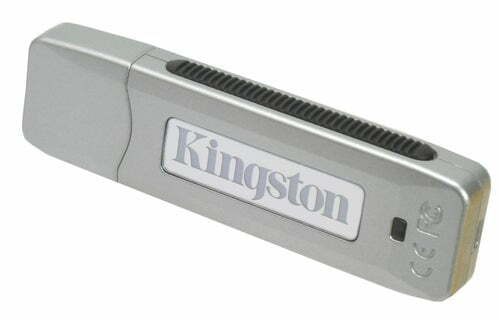Where would you be without a USB stick? Seriously, if you don’t have one, you must be some kind of insane lunatic still blown away by the invention of the digital watch. There’s simply no easier way to carry important files around, and with flash memory being so cheap, there’s little excuse not to have one.
Because of this cheapness, USB drives cost 100 cents, and normally we wouldn’t bat an eyelid when a USB flash drive lands on our desks. But in this case we were intrigued because this 1GB drive from Kingston boasted “Enhanced for Windows ReadyBoost”.

So what is ReadyBoost you ask? It acts as an extension of Vista’s SuperFetch feature, which loads frequently used files and programs into system memory so that they load significantly faster than if they loaded directly from the hard drive. As a result, Vista is much better at taking advantage of large memory configurations greater than 2GB, and power users will surely reap the benefits.
ReadyBoost does almost the same thing as SuperFetch, albeit with some limitations because while flash memory offers excellent access times, it’s still much slower than a hard drive for transferring larger files.
Still, there are some benefits, and ReadyBoost uses compatible flash memory to cache system files and the system paging file to provide some sort of performance boost.
Note that you cannot use old flash memory for ReadyBoost. To avoid performance degradation, you must use flash memory that meets certain minimum requirements. If you are using a USB flash drive, it must be USB 2.0, while each memory must support 3.5 MB/s for 4 KB random reads and 2.5 MB/s for 512 KB random writes.

This applies to any flash memory you use, and you can also use memory cards like Secure Digital and Compact Flash. Each storage drive must also have at least 64MB of free space, and you can use up to 4GB of flash memory for ReadyBoost.
The USB flash drive Kingston sent us is 1GB, and the company claims it exceeds data transfer requirements. Aside from the ReadyBoost certification, it’s a very typical and completely unremarkable flash drive. It looks just like any you’ve seen or used in the past, and it’s not rugged enough to survive being run over by a car or some nonsense like that. It’s just some plastic; nothing to get too excited about.
Setting up ReadyBoost is an extremely simple case of inserting a compatible storage device into a Vista PC and then, when prompted, selecting the option to use it for ReadyBoost. By going to the device’s Properties dialog box, you can select the amount of memory you want to allocate to ReadyBoost, allowing you to choose to keep some memory for storage if you wish.
To test the validity of ReadyBoost and see if Kingston ReadyFlash would improve performance, we first ran PCMark’s HDD tests on a notebook running Vista. Since notebooks are generally less powerful and more difficult to upgrade, they are the most likely candidates that could benefit from ReadyBoost, making this a real test.
The notebook in question was the Asus U1F recently reviewed by Riyad, which has an Intel Dual Core U2400 clocked at 1.06 GHz, 1 GB of system memory and a 60 GB hard drive. Riyad noted in his review that he found it quite sluggish on Vista and suggested that potential buyers should specify 2GB of RAM when purchasing. Does ReadyBoost have an effect?

First, the PC Mark tests suggest that this is certainly the case. We ran the hard drive tests again without ReadyBoost and got a score of 2310, and subsequent tests showed significant improvements when the USB device was plugged in and scheduled for caching.
With the full 1GB used, the score was 3106, which is 796 more than the score without ReadyBoost. Further testing returned results of 3017 at 880MB, Windows’ suggested memory usage, and 2680 and 2600 when using 512MB and 256MB, respectively.
Although PC Mark tests are more of an indicator of performance, these numbers suggest that there is certainly a significant amount of additional performance to be gained when using ReadyBoost. In addition, the notebook was noticeably faster in general use when loading programs. That’s not to say it was a revolutionary improvement, but it was noticeable enough to be worth checking out.
As another indicator, we decided to run a quick and easy test on our gaming machine, which is equipped with a slightly more powerful AMD Athlon 64 FX-60 Dual Core 2.63 GHz CPU and 2 GB Corsair Pro Series RAM.

We measured how long it took to load a game file from Oblivion and compared the times when using 1GB of ReadyBoost cache to none at all. After running the test multiple times, we found that ReadyBoost reduced load time by just under 15 seconds on average, an impressive return on a £13 investment.
Over time, you’ll surely notice this kind of difference, and we’d love to see if ReadyBoost has a similar impact on in-game loading, although that’s a little harder to test.
“‘Verdict”‘
It appears that ReadyBoost does indeed work, and the Kingston 1GB DataTraveler ReadyFlash drive is an excellent and dirt-cheap way to boost Vista performance. Ideally we’d like it to be smaller, as we already know Kingston can make much smaller USB flash drives, but other than that it does a good job.



